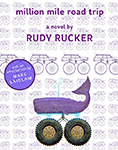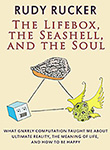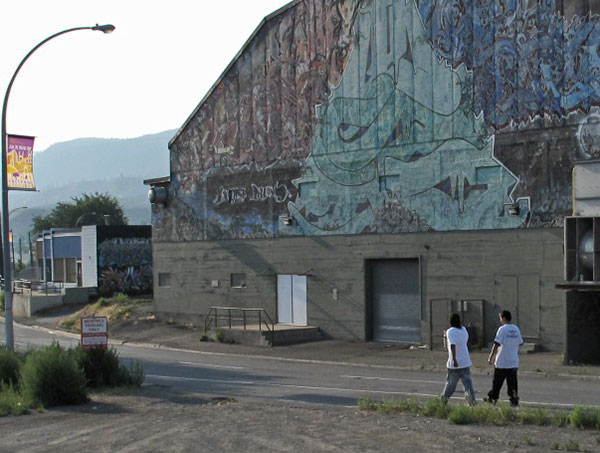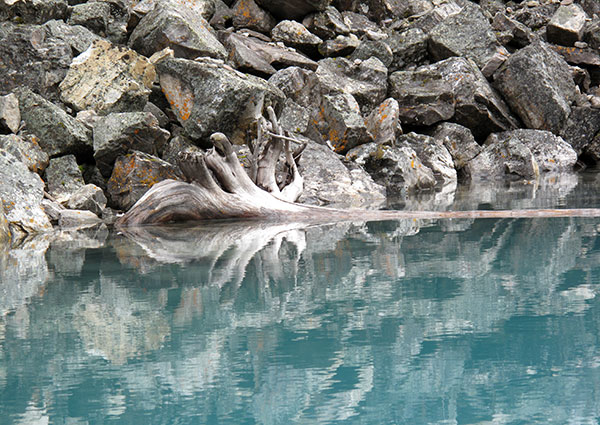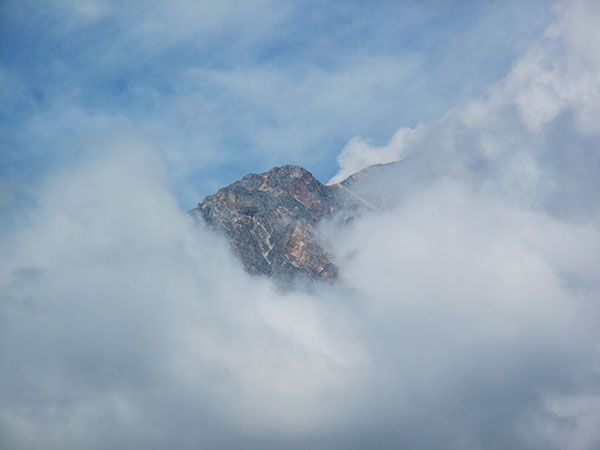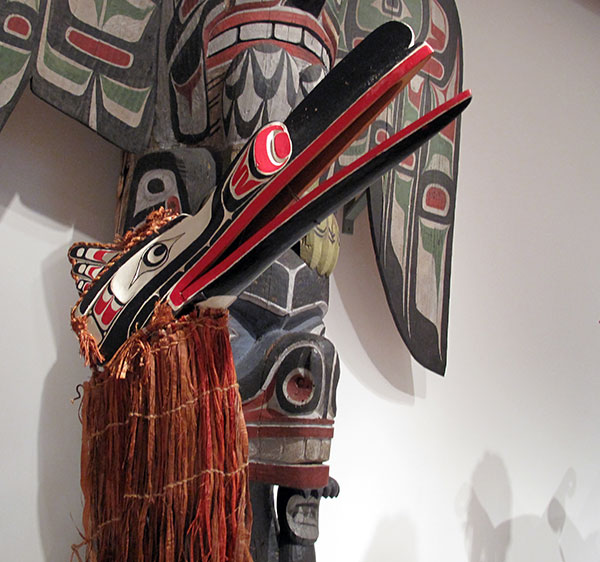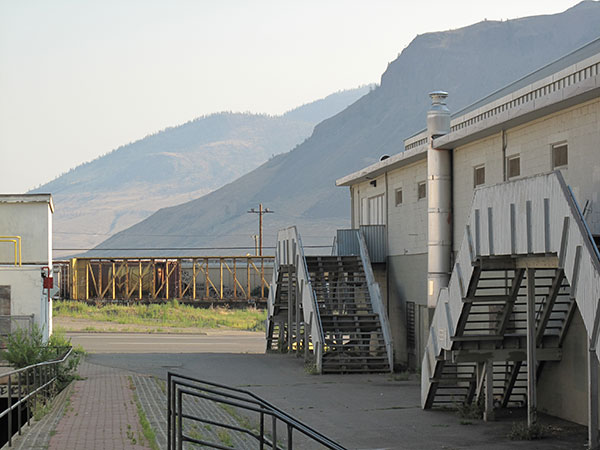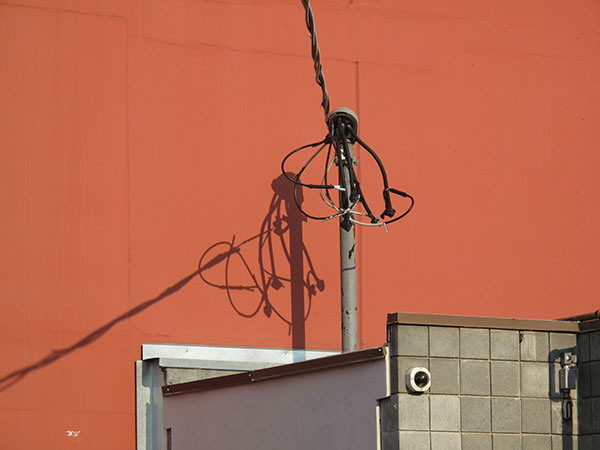The personable Tamara Vining of Seattle has posted a 50 minute video of my Clarion-sponsored appearance at the University of Washington Bookstore. First I read from the first chapter of Hylozoic for half an hour, and then I do some Q & A.
Thanks, Tamara!
This week I’m cranking up work on my novel Jim and the Flims again. I want my characters Jim and Durkle to tunnel down through purgatory beneath Flimsy and to drop out of a floor hatch in the lowest level of purgatory, and to find themselves falling from the Flimsy sky, that is, from the dome of living water above Flimsy. It’s dramatic. But how do I explain it?
I’d really like to lay this issue to rest, as I’ve been hung up on it for way too long, and I feel like it’s blocking me from proceeding on the book. This said, it could be that there’s something about the issue that’s core to my psyche and my state of resonance with the world of Jim and the Flims.
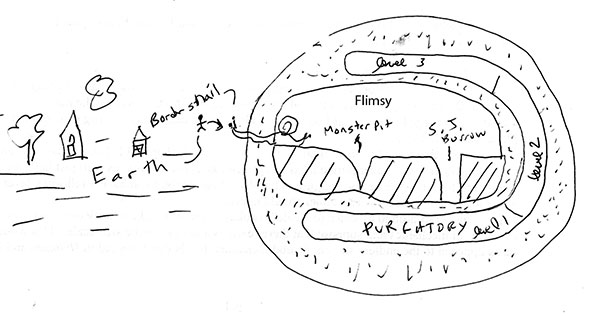
(Old Explanation: Bent Purgatory) In my July 19, 2009, post “Towards a Topology of the Afterworld,” I entertained the notion of having purgatory somehow bend around past the disk of Flimsy to be on top of it as well as under it, as shown in the reprinted illustration above (my guys enter purgatory at level 1, and exit it at level 3). But this is kludgy, and asymmetrical, and it poses the problem of why the snail-tunnel happens to go through from Flimsy straight to Earth, intersecting the living water, yes, but not intersecting purgatory. Also I want to bring in the notion of having an infinitely expansive center to Flimsy.
In other words, I need a tighter idea. Chip? Dale?

(New Explanation: Living Water Flow) Maybe I suppose that there’s a powerful and rapid flow of the living water, and that when Jim and Durkle tunnel down out of the lowest level of purgatory, they’re rapidly swept up into the sky, and they jump down from there. This is a fairly attractive notion, as it’s pretty easy to understand. And we might suppose that the infinitely distant hole in the center of Flimsy has a recycling fountain-like quality, creating a more or less toroidal flow through the central Helaven, with living water emanating from it, streaming around Flimsy and eventually dropping back into the Helaven from the sky. Okay, fine, let’s go with that. Here’s a picture, followed by some remarks on what I see in the picture.

Note the border snail on the right, sticking through to make a tunnel. Note also that I have an “Endless Sea” around the central Helaven, this can be like the shallow waters of Pyramid Lake.
A fine rain of souls is falling from the sky above Helaven. The souls are absorbed into the light, and new water and souls flow outward below.

More observations: Purgatory is a bunch of corridors and boxes, somewhat randomly accreted, like the Winchester Mystery House in San Jose, like an airport terminal forever under construction, or like a repeatedly renovated mall.
Jim and Durkle go through the Monster Pit, through Purgatory, and are swept with the living water in the sky, and they dive back down from there.
The tapering of the landmasses towards the center indicates that the center is, in effect, infinitely far away.

And there might very well be a great leviathian in that great gulf of living water at the bottom. Suppose it’s a gnarly tentacle-laden Supreme Jiva, a puppet-master who in fact controls all the sun-sized jivas in Flimsy—and I may as well suppose that some mid-level jivas are controlling the jivas in Weena, Jim, and so on. (Turns out that thing I was calling the Supreme Jiva a few posts ago was only the Easternmost Jiva.)
Groovy.


